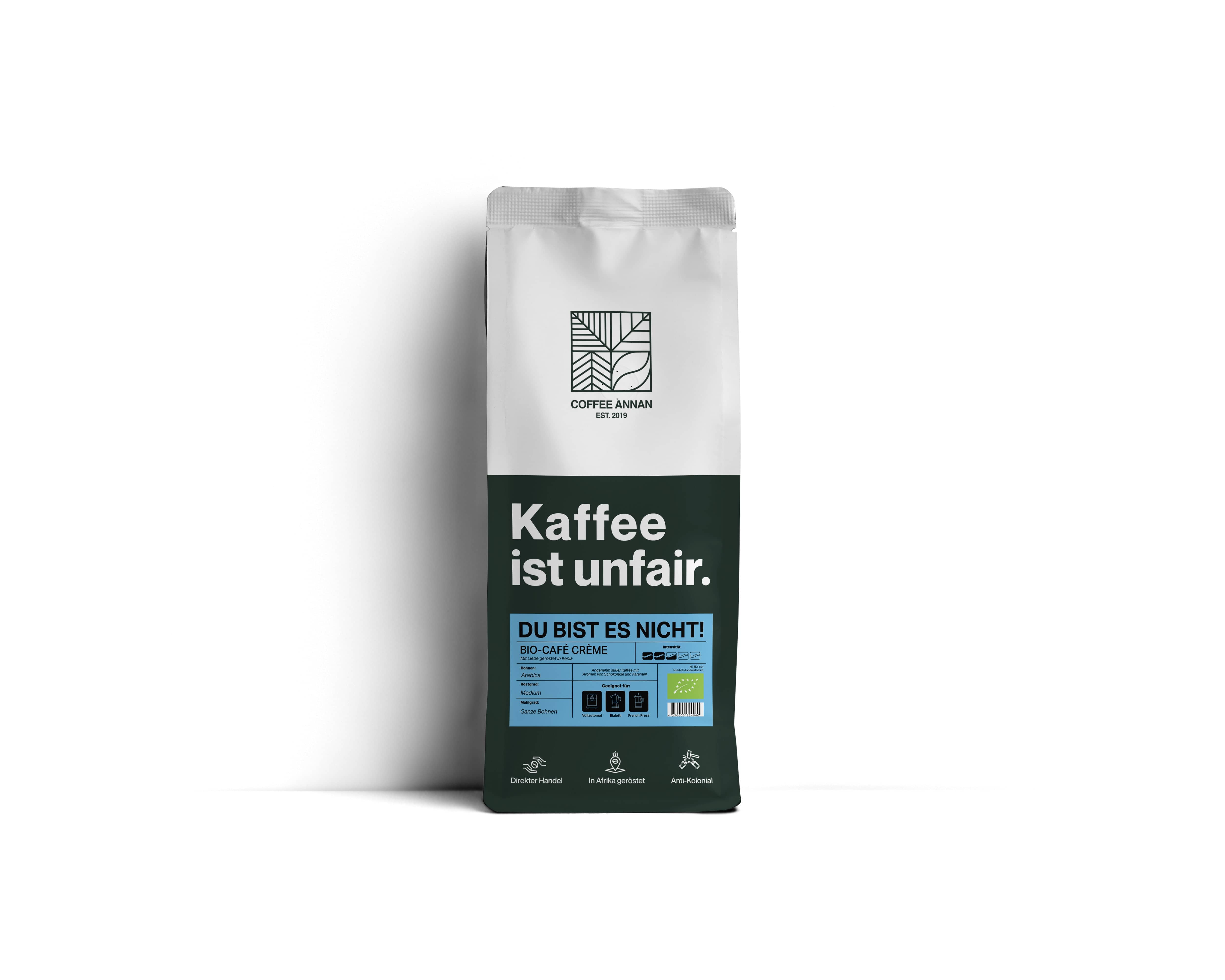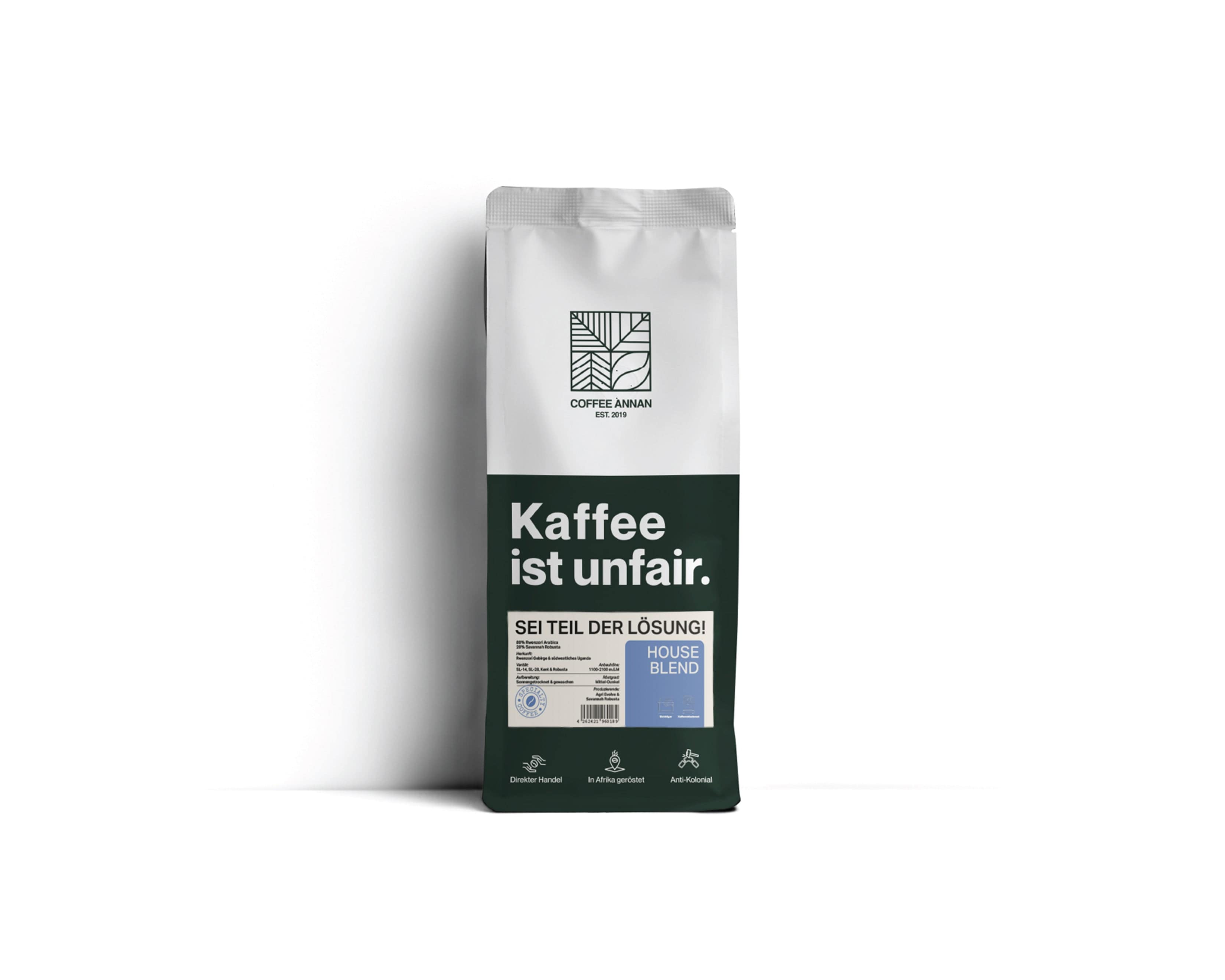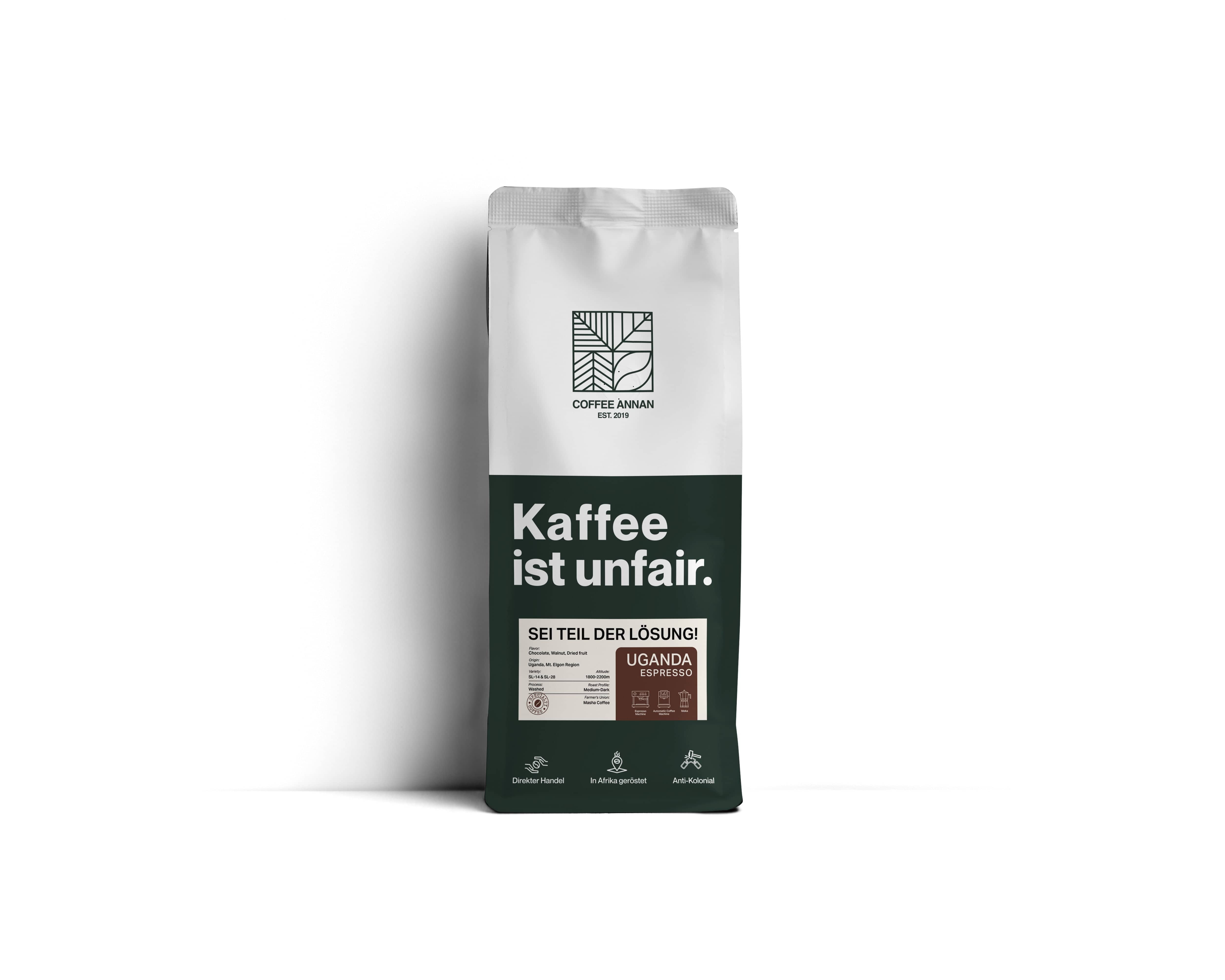Coffee is the favorite beverage of many people worldwide, but for some, its consumption can have unpleasant side effects. The reason is the high acidity of some varieties. Not surprisingly, mild coffee is becoming increasingly popular.
An invigorating cup of coffee without the unpleasant burning sensation in the stomach is a treat for coffee lovers. In this article, you'll learn everything you need to know about growing and roasting mild coffee. Dive into the world of mild coffee and prepare to be surprised!
Which Acids Are Contained in Coffee?
Coffee is a complex beverage with hundreds of different aromas and flavors. An important factor in its taste and its effect on our body is its acidity.
For some aficionados, caffeic acid is desirable, while others find it unpleasant or even irritating. It is primarily associated with heartburn and irritation of the stomach and intestines, although in addition, the bitter compounds and melanoidins in coffee that are produced during the roasting process also irritate the stomach. A mild coffee is generally considered to be gentle on the stomach.
But which acids are contained in the bean, and which are responsible for the unpleasant effects on our stomach?
Chlorogenic Acid
One of the best known acids in coffee is chlorogenic acid. Here are the facts about this disputed ingredient. Chlorogenic acid is an ester of caffeic acid and is also found in artichokes, nettles, valerian and St. John's wort, to name but a few.
The amount of this substance in the unroasted beans is up to 15 percent, and it is rumored to be responsible for many things (both good and bad):
- A diuretic effect
- A negative impact on the gastrointestinal tract
- An antimutagenic effect
- An anticarcinogenic effect
- The promotion of fat burning
- An antioxidant effect and DNA protection
- Protection against radioactivity
- Irritation of the stomach and the source of heartburn
Whether it is actually responsible for stomach irritation after coffee consumption has not been completely established. The nettle, St. John's wort or valerian, which all contain this substance, do not cause heartburn. On the contrary, they have a calming and healing effect.
Citric Acid
Just to be clear: we are not talking about the questionable trend of "refining" coffee with lemon juice to burn fat. This component can be found quite naturally in the bean. During the ripening and fermentation of the beans, various organic acids can be formed, including this one.
However, its content varies, depending on the variety of the bean, the growing region and the processing method. Arabica beans, for example, generally contain higher amounts of citric acid than Robusta beans.
Since these substances generally influence the taste of coffee, citric acid can also help to improve the taste and aroma. It imparts a tart and refreshing flavor to the beverage, which is highly appreciated by some coffee lovers. This is another instance where opinions, or rather tastes, diverge.
But beware. If you are sensitive to the acidity or already suffer from stomach problems, too much citric acid in your coffee can cause undesirable symptoms such as heartburn or stomach pain. In this case, it is advisable to pay attention to the roast and growing region of the chosen varieties and opt for a mild coffee. But we’ll circle back to this later.
Malic Acid
Malic acid is found, as the name suggests, in fruits such as apples, grapes and berries. They say that an apple a day keeps the doctor away, and the malic acid that is found in coffee, especially in certain varieties like Arabica, is actually particularly healthy.
But is it really desirable in our beloved coffee? Overall, this substance can be considered desirable in coffee, as it helps to make the flavor and aroma more complex and also offers certain health benefits. However, it's like the other acids; many coffee drinkers prefer mild coffee, in which case this component may be undesirable.
Phosphoric Acid
It sounds absurd, but phosphoric acid can enhance the sweetness in coffee. It imparts flavors of exotic fruits like mango or pineapple. Phosphoric acid is a mineral acid and is absorbed into the plant from the soil. It has a somewhat tart, sometimes tingling and harsh effect.
Acetic Acid
Uncontrolled fermentation can cause a high concentration of acetic acid, which can be very unpleasant for the consumer. However, controlled fermentation processes can also produce lighter, more fruity notes, which contribute to a predominantly positive impression.
Is it bad for the stomach? When consumed in excess, it can lower the pH value inside the stomach and cause irritation of the gastrointestinal tract. If coffee is high in acetic acid, or if someone is prone to stomach problems, it can lead to unpleasant symptoms like heartburn or upset stomach.
Tartaric Acid
Tartaric acid can also be found in coffee in small amounts. It contributes to the overall acid balance. However, in higher concentrations, it can cause an unpleasantly sour taste and potentially lead to stomach problems, especially for people who are sensitive to acidic foods.
When several different acids are present at the same time, the taste sensation is also much stronger. We then speak of complex acids, which many coffee drinkers find quite desirable.
Like so many things in life, acidity in coffee is a question of weighting and taste.
Which Coffee Bean Is Especially Mild
To begin with, there is no such thing as a coffee without acidity. But there are a number of factors that can influence this, such as the processing method, the growing region, the soil and the roasting process.
4 Important Factors For Mild Coffee At A Glance
- Pay attention to the degree of roasting: dark-roasted beans tend to be milder than lighter-roasted beans.
- Choose a gentle brewing method: the shorter the grounds are in contact with hot water, the milder the coffee tastes.
- Ask your barista: If you're at a coffee bar, you can ask your barista for mild options or ask for a recommendation.
- Use the online Coffee Annan coffee finder, we offer for just this purpose. Search for mild coffee, and you'll see some varieties to match your preferences.
Growing Regions for Mild Coffee
Where coffee comes from, has a significant impact on its acidity. The coffee plant grows best in tropical and subtropical regions known for their fertile soils, abundant sunshine and adequate rainfall. However, within these regions, various factors such as altitude, soil type, and climate can also affect the acidity of the beans.
Three well-known growing regions for mild coffee:
Brazil: Brazil is the largest coffee producer in the world and is known for its mild, sweet, and chocolaty flavors.
Colombia: Colombia is a well-known growing region for Arabica beans and produces mild, fruity and balanced coffees.
Highland coffee from Ethiopia is generally considered mild, as it is drier and sunnier in the highlands than in the valleys and water is considered an acid carrier. This coffee is famous for a light body and floral notes. Limu from Ethiopia is one of our favorite coffees at Coffee Annan.
Not only the soil and weather conditions of the country where the coffee is grown, but also local climatic conditions have a major impact on the plant and the ingredients inside the beans. For example, acidity within a country can vary from plantation to plantation or even seasonally, depending on the soil, the rainfall and the altitude at which the coffee beans are cultivated.
Roasting has a significant influence, whether a coffee is easy on the stomach or not. This is because the type of roasting largely determines the acidity of the beans.
The Connection Between Roasting and Acidity
It is said that dark roasted beans are more stomach-friendly than light roasted ones. Why is that? Initially, this sounds illogical, considering that dark-roasted beans taste much stronger and are used for strong coffee drinks like Italian espresso.
The explanation is simple. Heat exposure converts the acids in the beans into flavor compounds. Balanced acids in the green bean are therefore important for a complex taste experience in the finished beverage.
However, since the acids in the finished beverage also play a role in determining how mild your coffee is, special attention should be paid to the roast.
A light roast results in a higher acid content, while dark roasted beans make for a mild espresso or cappuccino. The remaining acids are also perceived as "softer" and more pleasant than the acids in unroasted beans.
But beware! The taste and properties of coffee are not only determined by the degree of roasting, but above all by the roasting process itself. During the fast, industrial roasting process, there is little time to convert the acids. With gentle drum roasting, on the other hand, the beans are heated gently and there is sufficient time to break down unwanted, excess acids.
So, if you need a coffee that’s easy on the stomach, you should go for dark and gently roasted low acid organic coffee.
Which Preparation Method Is Best for Mild Coffee?
Have you ever experienced that your coffee tastes sour? Among other things, this could be due to the wrong preparation method. So, how can you prepare coffee that’s easy on the stomach? You just need to follow a few simple tips.
Generally speaking, the shorter the grounds are in contact with the brewing water, the milder your coffee will be. Therefore, despite its strong flavor, espresso is lower in acid content and generally gentler on the stomach than filter coffee, for example. Cold Brew is the winner in this category. Here, as the name suggests, the grounds are "brewed" cold. The aromatic substances are extracted cold and gently over a long period of time - up to 24 hours - resulting in a coffee that’s particularly easy on the stomach.
FAQ
Which is The Mildest Coffee?
As a rule of thumb, the shorter the contact time between the grounds and the hot brewing water, the gentler the drink is on the stomach. Short brewed coffee drinks are therefore generally more suitable for people with sensitive stomachs.
Does Milk Make Coffee More Easily Digestible?
Some people find coffee with milk or cream easier to digest. This may be because the milk fats serve to protect the stomach from the acid. Dairy products are also alkaline and can balance out the acidity a bit.
However, lactose throws a spanner in the works for those who suffer from lactose intolerance. Unfortunately, digestive problems and discomfort are inevitable. In this case, plant-based alternatives such as oat milk or almond milk can be a welcome option.
Why Are Acids Desirable in Coffee?
They are an important part of the flavor profile and contribute to the complexity and depth of the aroma. Acids add a pleasant freshness and brightness to coffee that can enhance the overall flavor experience.
Which Roasting Process Makes for Particularly Mild Coffee?
Gently, slowly and darkly roasted beans from drum roasting promise an especially mild cup.
The Bottom Line
How mild a coffee is depends not only on the beans, but on the interaction of various complex factors. The growing region, the roasting process and the preparation method all play a decisive role. In addition, up to a certain extent, acidity in coffee is a question of taste and can be perceived differently from person to person. Those with sensitive stomachs should opt for dark-roasted beans and usually tolerate espresso or cold brew particularly well.
Why not order a free sample from Coffee Annan with your office colleagues and try out several varieties? That way, you're sure to find the one that tastes and agrees with you particularly well.












